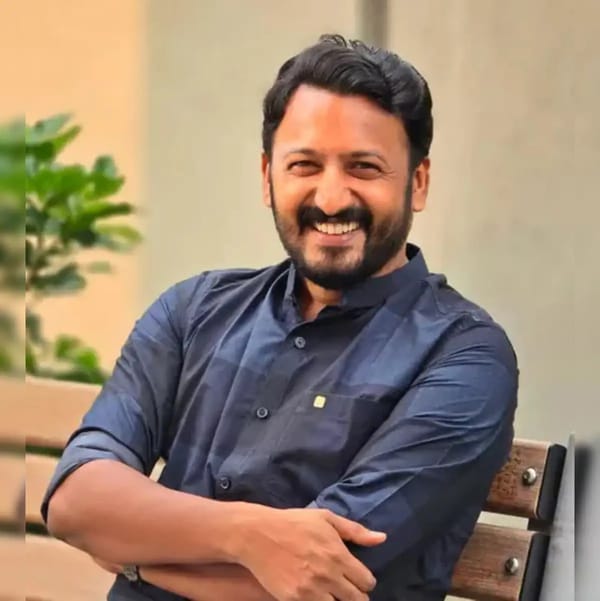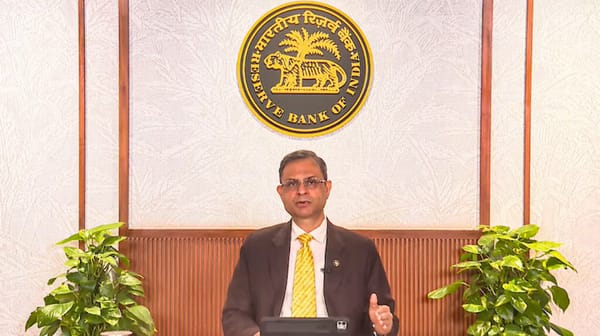Mudiyettu: The Goddess dances at Esplanade
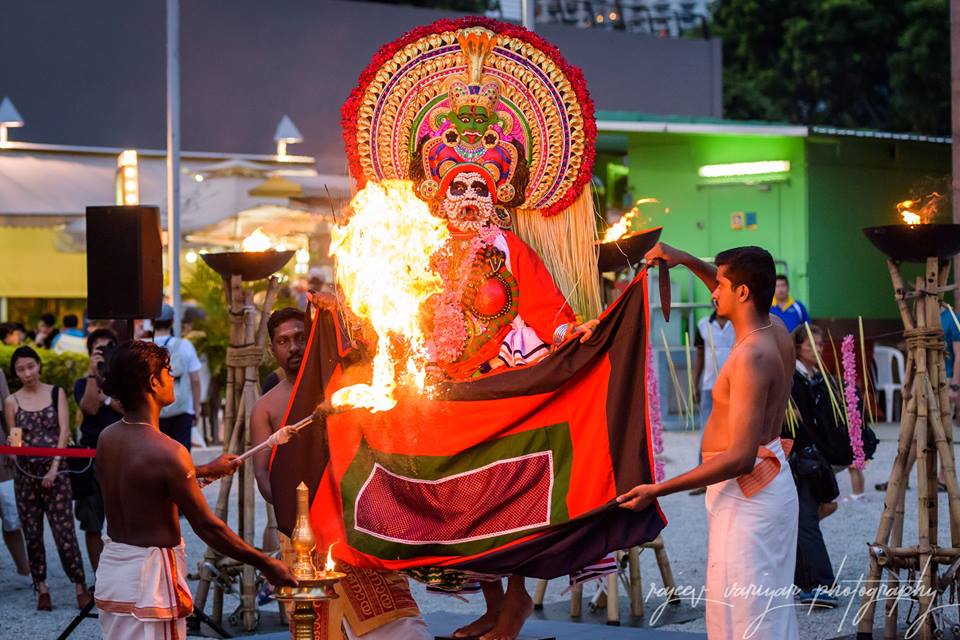
An awe inspiring headgear that takes an ethereal glow under the fire, elaborate costumes and make up that take hours to do, flames that crackle and sparkle, an energetic musical ensemble, dance, drama, humour, all this and more, forms ‘Mudiyettu’, the ritualistic and traditional art form from Kerala.
Mudiyettu in 2010 got listed in UNESCO’s Representative list of Intangible Cultural Heritage of Humanity, becoming the second art form to be listed from Kerala after Koodiyattam. It enacts the mythological tale of the battle between the Goddess Kali and the demon Daarika.
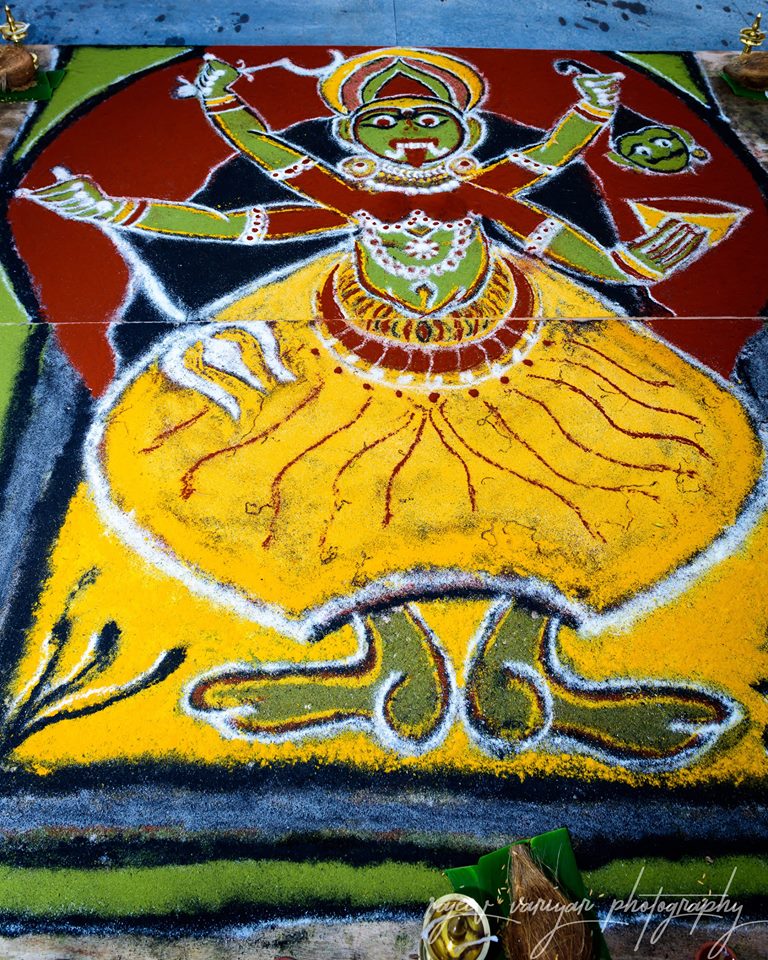
This dance drama generally performed in the Kavus (sacred groves) and endemic to the three popular river banks of Kerala: Chalakkudy River (Thrissur), Periyar (Ernakulam & Idukki) and Moovattupuzha (Kottayam) with wholehearted community participation was staged at the open space of the waterfront at Esplanade.
A few members of the 11 member troupe from Mudiyettu Sangham Keezhilam first and foremost set about to draw an elaborate Kalam, pictorial drawing of Goddess Kali. It took them more than 3 hours. Some others set about getting ready with their time consuming costumes and make up while some chipped and shaped the tender coconut fronds, which they needed to use liberally and others worked on making the flambeaux.
Keezhillam Unnikrishnan led the group. He has been a Mudiyettu performer for the last 35 years. He is the recipient of several awards; the Fellowship of the Central Government of India (2002), Kalaa Ratna award (2007), Folklore academy award (2009) Kerala Sangeetha Nataka Academi Award – Kalasree (2012), Kerala Sangeetha Nataka Academi Award (2016) to cite a few. He has also travelled and performed extensively all over the world; UK, Korea, Italy and USA, popularising this art form. The other members in the troupe are students he has trained from childhood.
Each member is able to multi task either playing the Chenda (percussion instrument) or donning a character, drawing the Kalam and so on. But the role of Kali is always his. He proudly claims that he has performed the Kali role for 25 years in over 1260 performances.
There was humour and fun when the character Kooli dressed like a female clown interacted with the audience. These character improvisations have been done over the years to break the severity of the enactment and to communicate and establish rapport with the audience.
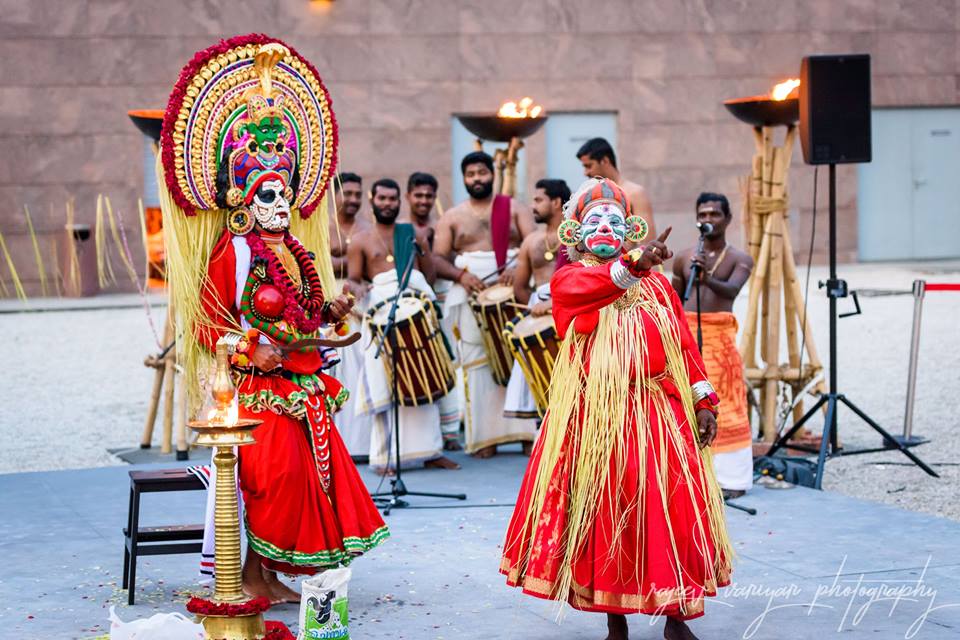
Throughout the enactment there were attempts by the characters to interact with the audience. Since it is how the play functions in Kerala.
Interestingly the whole music ensemble typically moves along with the various characters as they move into the crowd. Every nuance of the performer is well coordinated with the musicians and vice versa.
It is common place also that the flambeaux follow the performers. The use of the Thelli (dried pine resin powder) on the flames to make it fizzle and crackle at appropriate times gave it a magical look. Many times one got the feel that the various characters are arising from the flames.
The dance drama starts with a long percussion piece called Keli which is to let the community know that the programme is to start soon. And it ends with a Stuthi (praise) to Lord Shiva who created Goddess Kali from his third eye.
Voicing concern to Keezhilam Unni that if it rains the programme will be a complete disaster he calmly replied we have done thousands of shows but nowhere has it rained and a programme stopped. That was reassuring indeed and thankfully it didn’t rain!
Mudiyettu was presented at the Edge: Waterfront of Esplanade with the story split into three segments in three days. It was presented on 17th, 18th, and 19th of Nov 2017 as part of Kalaa Utsavam of Esplanade by the Mudiyettu Sangham Keezhillam in association with Soorya (Singapore).
Photo credits - Rajeev Variyar

